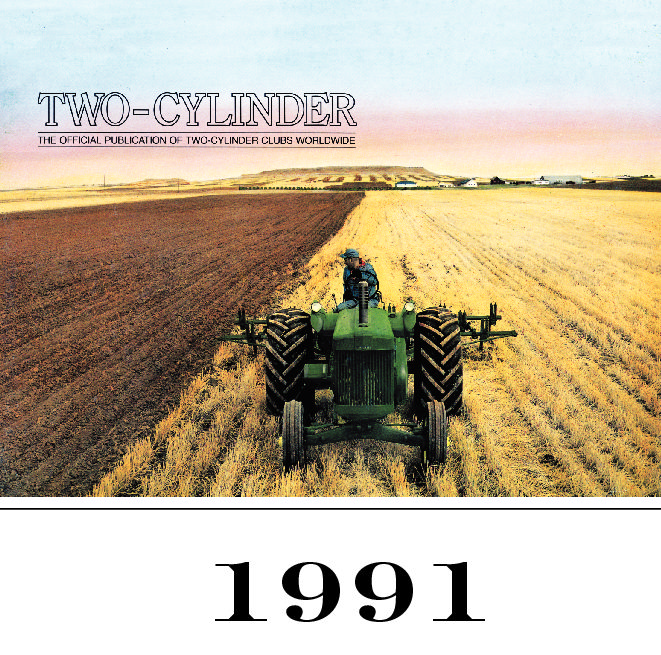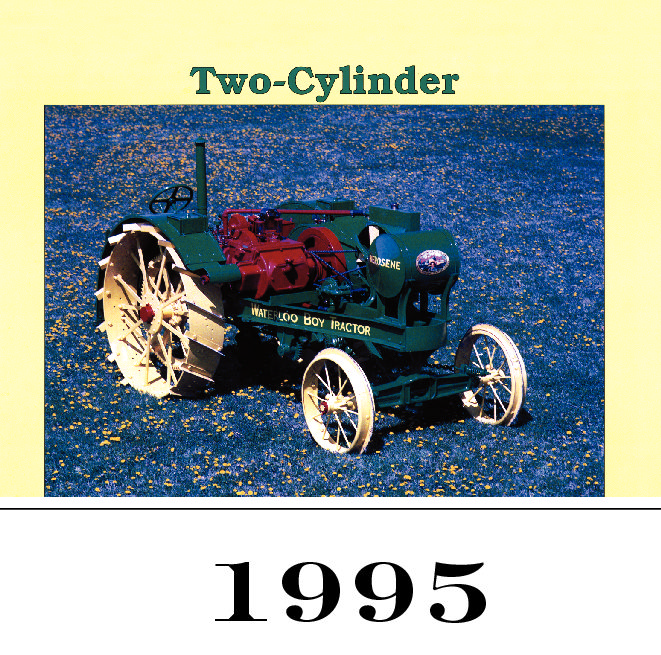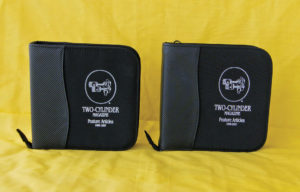
1991 Feature Issues — CD-ROM
December 2, 2018
1993 Feature Articles — CD-ROM
December 2, 2018$14.95
Tractor Identification — Part II
The John Deere Model “620” Tractor
The John Deere Styled Model “G” Tractor
Expo III
The John Deere Model “70” Tractor
The John Deere Spoke-Flywheel Model “D” Tractor
TRACTOR IDENTIFICATION — PART II: The previous issue of Two-Cylinder featured the first of a two-part article on basic identification of the “Lettered” models of John Deere Tractors. This issue completes the article by including the remainder of the Waterloo-built tractors, the “M” built at Dubuque, Iowa, and the “L” Series built in a wagon factory at Moline, Illinois. The rapidly growing interest in vintage tractor collecting has resulted in a number of questions on tractor identification being generated by less experienced Club members, and these articles are intended to provide a general overview in response.
MODEL “620” TRACTOR: In July 1956, the “520”, “620” and “720” made their first appearance as “The Newest Family In Town.” Five tents were set up with a large, nearly circus-sized tent, complete with risers and seating, serving as the location for the introductory speech and new-product drive through. Major features were pointed out during the introduction, but detailed examination was left to component and cutaway displays in three of the other tents. The fifth tent served as a mess hall.
There was a lot of excitement generated at the “20” Series introduction. The tractors were significantly improved over their “First Numbered” Series predecessors in horsepower, hydraulic system features, convenience, and operator comfort. In addition, the splash of yellow on the sides of the hood and grille gave the tractors what was referred to as a “clean-cut look” — a familiar term of the 1950s.
STYLED MODEL “G” TRACTOR: Production of tractors with the Model “G” designation resumed on March 7, 1947, beginning with serial number 23000. The last “GM” produced was serial number 22112, built March 10, 1947.Serial number plates 22113 through 22999 were scrapped.
At first the revived Model “G” was a carryover of the “GM”. It retained the familiar steel seat and forward battery location. Then, beginning with serial number 26000, the “G” was regularly equipped with self-starter and lights — resulting in a change to the “battery-box” seat. Tractors serial numbered 23000 through 25671 are sometimes referred to as the early type styled “G”, while those numbered 26000 through 64530 are simply known as the styled “G”. Serial number plates 25672 through 25999 were scrapped to provide a convenient serial number break for the Parts Catalog.
EXPO III: The third Two-Cylinder Club Expo, held July 9-11, 1992, more than doubled the size of 1990s Expo II, and was five times the size of the first (1987) Expo. There were 920 displays making up a total of 896 registered exhibits. The nearly 700 tractors were accompanied by just under 200 implements and other items of farm equipment. Additional displays included a variety of stationary engines, specialized equipment, and a limited number of vintage toys.
MODEL “70” TRACTOR: The Model “70” was introduced in 1953 to take the place of the Model “G”. The “G” had been produced only as an all-fuel tractor, but developed a reputation for being particularly rugged. The introduction of the “70”, described as a “heavy-duty 4-plow tractor” developing over 50 belt horsepower was well received. Sales picked up immediately, and quickly surpassed the rate of the best days of the “G”.
SPOKE-FLYWHEEL MODEL “D” TRACTOR: To collectors, the spoke-flywheel Model “D” is probably the most significant of all John Deere Tractors. Certainly, it is the first of the two-cylinders to be collected. Many were reduced to belt work or retired to the fence row as newer and more powerful tractors took their place in the field. Good basic design and ruggedness was enough to keep the old tractor around rather than accept short change for it as a trade-in, and that kept a reasonable number of them from the World War II scrap drive — a fate that nearly rendered the Waterloo Boy extinct.
The story of the development of the “D” is provided through words and photographs in this feature article. After that, we’ll take a look at the three categories of production tractors: the first 50, the 26-inchers and the 24-inchers… and some of the people who own them today.
- Information-packed, educational, and entertaining Feature Articles; with photos and accuracy unmatched elsewhere!
- Each CD contains all of the Feature Articles for an ENTIRE YEAR, and is enclosed in its own unique sleeve!
- Searchable PDF format! What does that mean? You’ll be able to easily locate specific subjects in the article, “zoom-in” on photos (in color and b/w), and print off any part (or the entire article) for your personal use.
CD-ROMS are for COMPUTER-USE ONLY and WILL NOT PLAY on traditional television or radio entertainment systems!!! Opened CDs are not eligible for refund or return. Computer System Operating Requirements: Adobe Reader 8.1.3 • Adobe Reader 9 • Windows Vista • Windows XP • Windows 2000 SP4 and higher • Mac Intel/PowerPC 10.4.11 – 10.5.6 • Mac Intel 10.4.4 – 10.4.10 • Mac PowerPC 10.4.3 – 10.4.10, and higher




Reviews
There are no reviews yet.